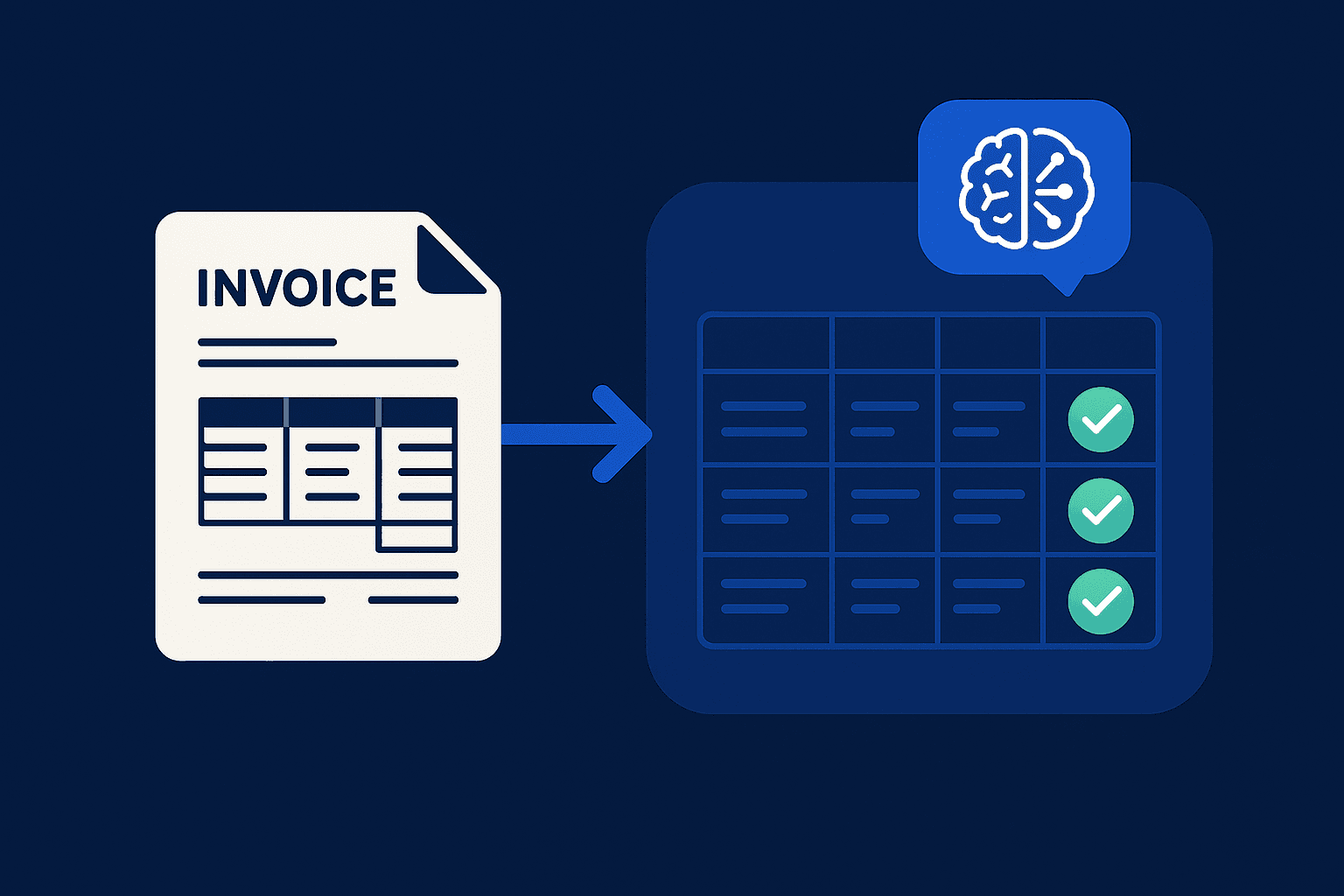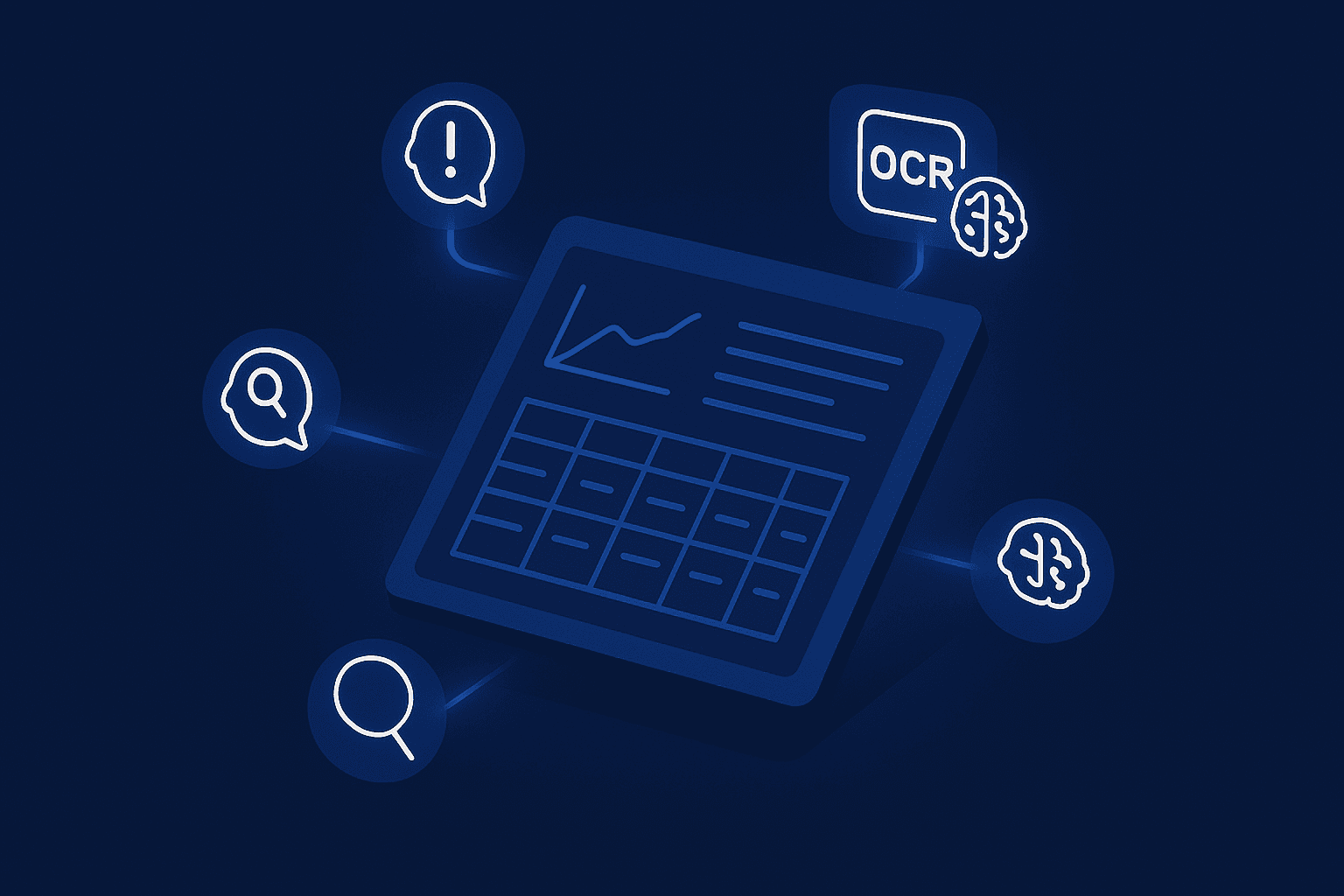OCR + AI: From Documents to Decisions in Minutes
Turn invoices, POs, receipts, and contracts into validated, structured data with human-in-the-loop—fast, accurate, and audit-ready.

Executive summary: OCR alone extracts text; OCR + AI validates fields, flags risks, and routes exceptions—so finance and ops move from PDFs to decisions in minutes. We tailor the pipeline to your document types, business rules, and ERP.
The business case (why now)
Manual document handling slows cash flow, introduces errors, and hides risk in unstructured text. OCR + AI reduces cycle time, increases accuracy, and creates a clean data trail for audits and analytics.
What the solution does
- Extracts fields from invoices/POs/receipts/contracts (header, line items, totals).
- Validates with your rules (totals, tax, vendor match, date ranges, GL mappings).
- Explains discrepancies in plain language with recommended actions.
- Routes exceptions to the right owner (AP, procurement, legal).
- Exports to your target (CSV/API: SAP, Oracle, Dynamics, NetSuite, custom ERP).
Built for your environment (personalization menu)
- Document variety: multi-layout invoices, regional tax formats, multi-currency.
- Validation sources: vendor master, PO receipts, contract terms, FX rates.
- Security: redaction at source, row/column-level permissions, private VPC.
- Hosting: Azure/AWS/GCP or on-prem; Databricks or serverless APIs.
- Integrations: email intake, S3/Blob/GCS, message bus, ERP/BI.
Typical flow (15–30 minutes per batch)
1. Ingest PDFs/emails → secure bucket.
2. OCR per page → JSON with boxes and text.
3. AI validation applies your rules (sum lines = total, vendor in master list).
4. Enrichment (vendor ID, GL code suggestions, currency normalization).
5. HITL review for low-confidence fields or rule violations.
6. Export approved records → ERP/API + lakehouse tables.
7. Monitor quality and touchless rate; retrain templates as needed.
Outcomes you can expect
- Faster cycle time: minutes instead of days.
- Higher accuracy: fewer downstream corrections.
- Lower costs: less manual entry and rework.
- Audit readiness: versioned data, field-level confidence, and change logs.
- Better analytics: structured line items feed spend analysis and fraud checks.
30-day pilot plan (tailored)
Week 1 — Scope & guardrails: pick 1–2 doc types; define required fields/acceptance tests; connect vendor/PO data. Week 2 — Prototype with your docs: OCR pipeline, validation rules, reviewer UI; test ERP export. Week 3 — Limited production: run on live docs; measure confidence, exception rate, and time saved. Week 4 — ROI & scale: present metrics; tune thresholds; add a second doc type.KPIs to track
Touchless rate • First-pass yield • Cycle time • Exception rate • Reviewer time • Discrepancy recovery
Risks & mitigations
Low-quality scans → preprocessing & supplier guidance • Edge cases → manual lane + few-shot learning •
PII exposure → redact at source, least-privilege access • Hallucinations → rule-first validation + citations
